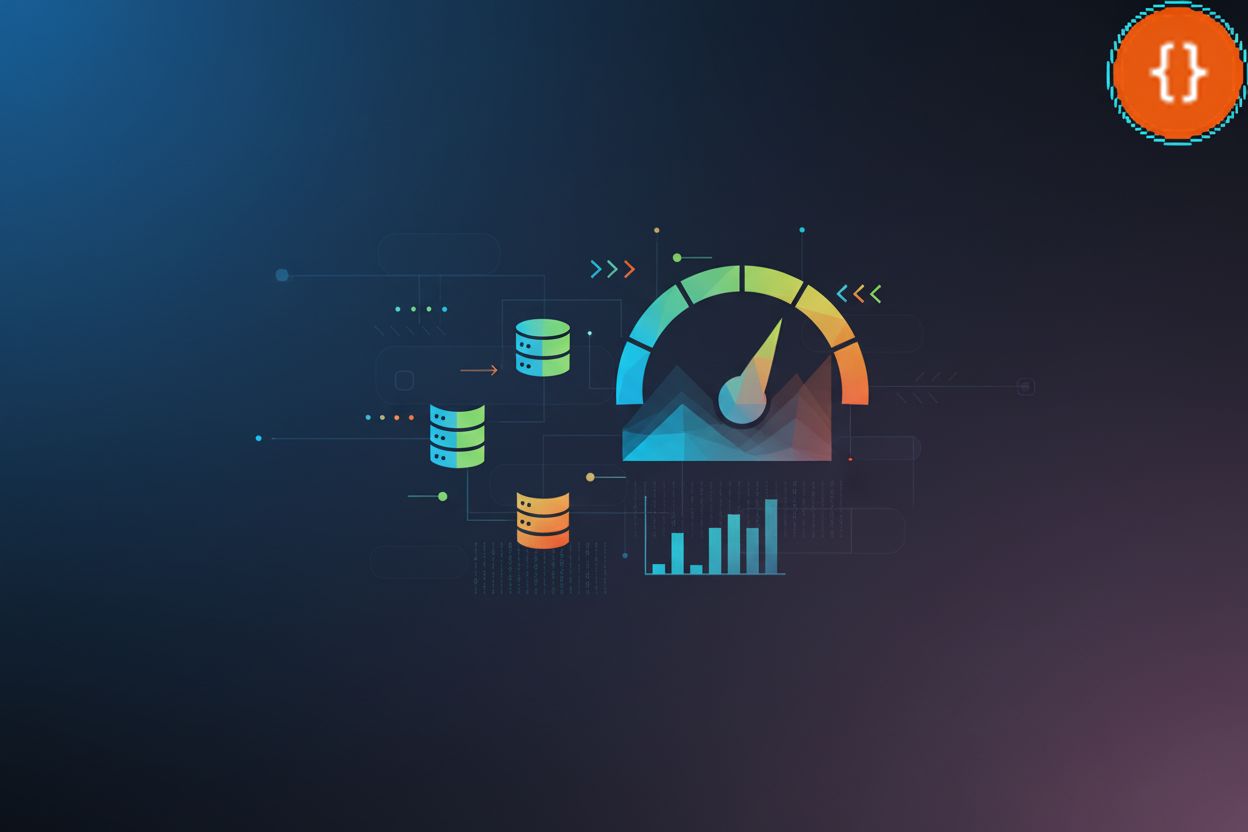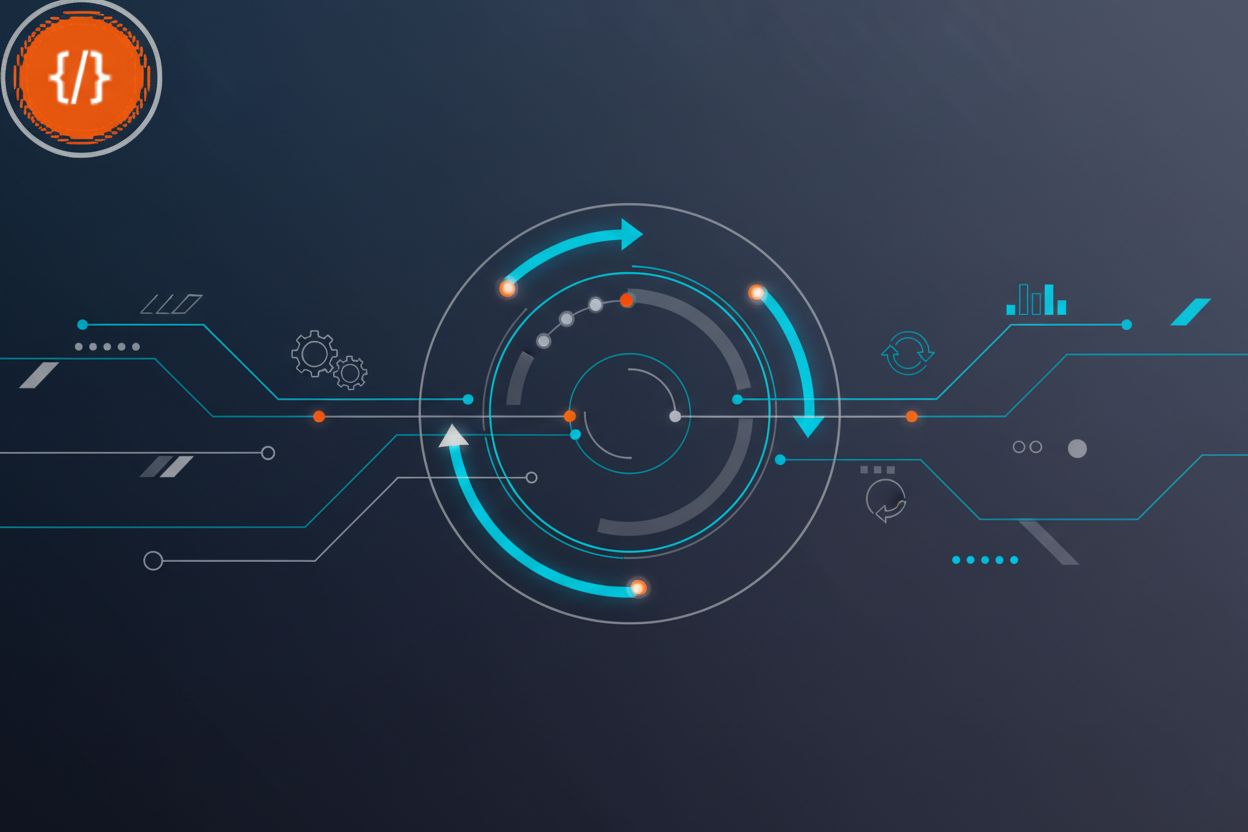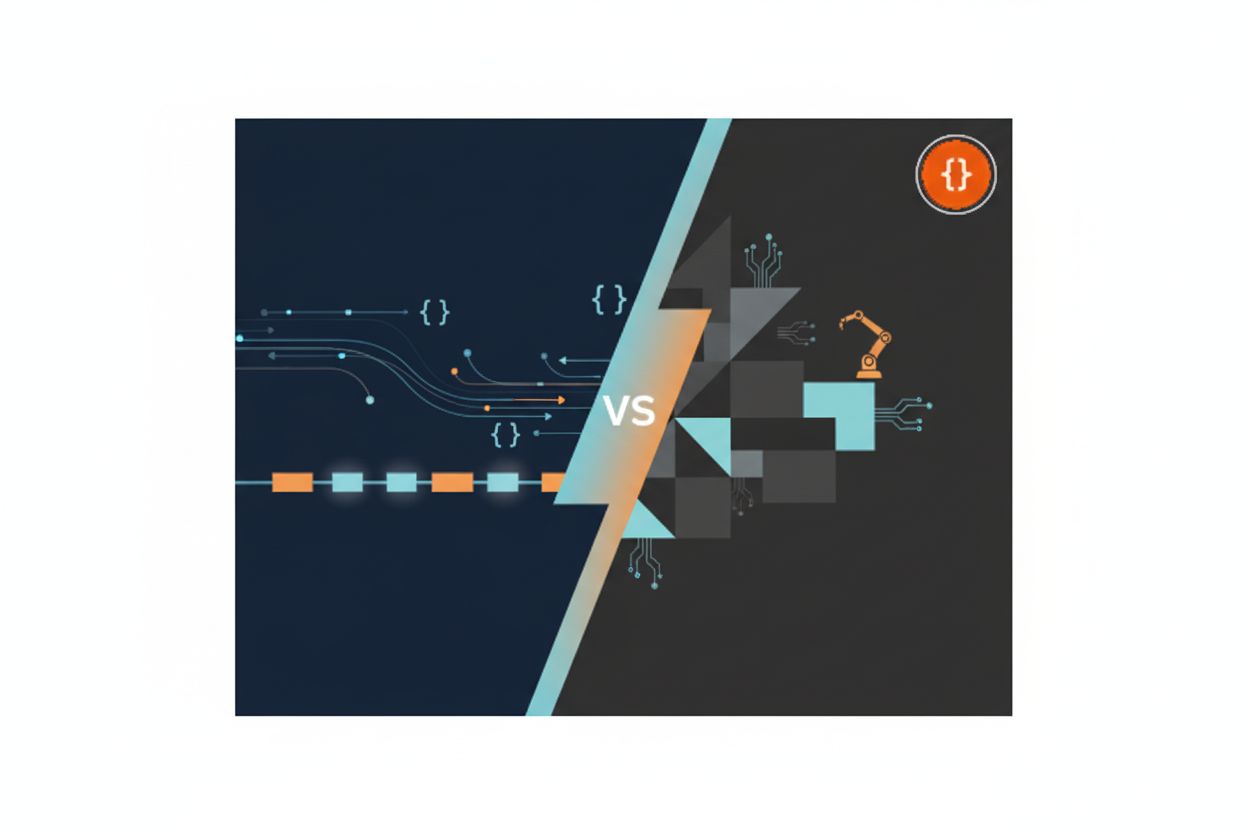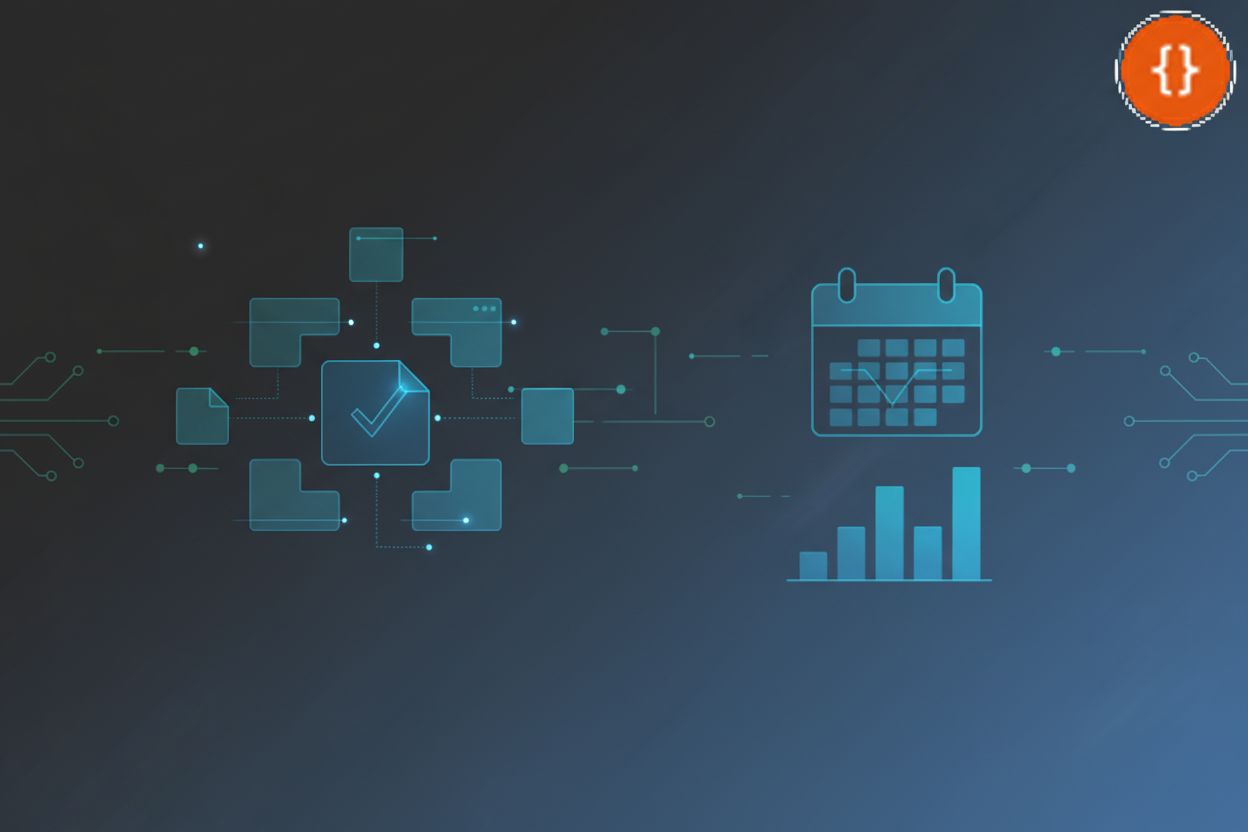How to Write Manual Test Cases for API Testing
TL;DR
AI-Powered Predictive Analytics for Conversion Funnels
Understanding Conversion Funnels: The Basics
Alright, let's dive into conversion funnels – what they are and why you should care. Ever wonder why some website visitors become paying customers, and others just... vanish? Well, that's where understanding the basics of conversion funnels comes in real handy.
Basically, a conversion funnel is a visual representation of the customer journey. It maps out the steps a potential customer takes before finally converting. Think of it like this:
Awareness: This is where people first hear about your brand. Maybe they saw an ad, found you on Google, or a friend told them. For example, a healthcare company might run a social media campaign.
Interest: Now they're intrigued and wanna learn more. They might visit your website, read your blog, or follow you on social media. Like, a retail business could have a blog with style guides.
Decision: They're seriously considering buying. They might compare prices, read reviews, or check out your return policy. An example, a finance company may offer free consultations.
Action: Boom! They convert. They make a purchase, sign up for a newsletter, or request a demo.
Understanding each stage is super important for effective marketing. It lets you tailor your message and strategy to meet customers where they are at, you know?
To really understand how your funnel's performing, you gotta look at the numbers:
- Conversion Rates: How many people are making it from one stage to the next?
- Drop-off Rates: Where are people leaving the funnel? These drop-off rates are critical for identifying bottlenecks.
- Time-to-Conversion: How long does it take for someone to go from awareness to action?
Now that we've got the basics down, next up we'll be looking at how ai can help you predict what's gonna happen in your conversion funnel.
The Power of Predictive Analytics: An Overview
Alright, so you're probably wondering how predictive analytics actually helps your business, right? It's more than just fancy algorithms, trust me.
Well, predictive analytics uses ai and stats to, like, guess what's gonna happen. It's kinda like having a crystal ball, but instead of magic, it's math.
- It figures stuff out by looking at old data, seeing patterns, and then uses those patterns to predict the future. Think of it as teaching a computer to learn from the past so it can tell you what might happen next.
- these ai algorithms can analyze tons of data, way more than any human could, to spot trends and forecast outcomes.
- There's different ways they does it too, like regression (figuring out relationships between things), classification (sorting things into categories), and time series (predicting stuff that changes over time, like sales). For example, regression can be used to model the relationship between website engagement metrics and conversion rates to predict future conversion likelihood.
Predictive analytics isn't just for tech companies or something. It can seriously boost your marketing game too.
- You can use it to figure out who your best customers are and target them better. No more wasting money on ads that no one clicks!
- It also helps you make things feel more personal for customers. Like, recommending the right product at the right time, or creating a website experience that feels custom-made.
- You can even use predictive analytics for proactive identification of potential issues or opportunities.
A 2024 study by CXsphere found that sales increased by 25% and customer satisfaction by 15% for brands that used predictive analytics. (A Dive into the Statistics of the AI Revolution - CXsphere)
Now that we've seen what predictive analytics is and what it can do, let's dig into the specific tools that make it all happen!
AI-Powered Predictive Analytics: A Game Changer for Conversion Funnels
Did you know that ai can now predict what your customers are gonna do before they even do it? Pretty wild, right? Let's dive into how ai is totally changing the game for conversion funnels.
ai can chew through massive datasets way faster than any human, or even traditional methods, could ever dream of. It spots patterns and trends that would normally stay hidden. For example, in healthcare, ai can analyze patient data to predict who's most at risk for certain diseases, allowing for proactive intervention.
Machine learning algos get smarter over time, continuously learning and adapting to new data. This is super useful for understanding changing customer behaviors. Like, a finance company could use machine learning to detect fraudulent transactions as they evolves.
Natural language processing (nlp) is another big one. It helps understand what customers are saying and really mean. Think of it like this: a retail business can use nlp to analyze customer reviews and social media posts to figure out what people really think about their products. For instance, sentiment analysis of customer feedback at a certain stage can inform predictions about user satisfaction and potential churn.
Predictive lead scoring uses user behavior and demographics to figure out who's most likely to convert. It helps sales teams focus on the hottest leads. For instance, a saas company might use this to prioritize demo requests from users who've spent a lot of time on their pricing page.
AI-driven A/B testing is a total lifesaver. It figures out the best website designs and content by automatically testing different versions. AI enhances A/B testing by dynamically allocating traffic to variations that show early promise, identifying winning variations faster, and even personalizing test variations based on user segments. AI would consider data points like user demographics, browsing history, and engagement metrics to make these decisions.
Personalized product recommendations and content delivery make customers feel like you get them. For example, an e-commerce site can suggest products based on a customer's browsing history and past purchases.
Churn prediction helps you keep customers around by spotting those who are about to leave. A subscription service, for example, might offer a discount to customers who haven't logged in for a while.
Companies that use predictive analytics see some serious results. A 2024 study by CXsphere found that sales increased by 25% and customer satisfaction by 15% for brands that used predictive analytics.
All this is pretty cool, right? Now, let's talk about how you can get your hands on some free click tracking and analytics with ClickTimes!
Choosing the Right AI Tools: A Practical Guide
Picking the right ai tools can feel like finding a needle in a haystack, right? But don't sweat it, we'll break it down.
- Ease of use and integration is super important. You don't want to spend weeks just trying to figure out how the dang thing works, do you? Look for tools that play nice with your existing systems, like your crm or website analytics.
- Scalability and performance matters, espically if your business is growing. Can the ai platform handle more data without slowing to a crawl? A small retail business might start simple, but needs room to grow, ya know?
- Customization options and flexibility is key. Can you tweak the ai to fit your specific needs, or are you stuck with a one-size-fits-all approach? A healthcare provider might need very specific, tailored predictions, for example.
- Data security and compliance are non-negotiable. Make sure the tool follows all the privacy rules and keeps your customer data safe; that's really important.
- Pricing and support should be considered. What's the total cost, and does the vendor offer good customer support?
When choosing tools, consider your specific needs:
- Google Analytics: While primarily a web analytics platform, its AI-powered insights can offer valuable data that supports predictive analytics efforts. It's great for understanding user behavior and identifying trends that can inform your predictions, especially for smaller businesses or those focused on website performance.
- Adobe Analytics: Offers more robust segmentation and predictive capabilities, making it suitable for larger enterprises with complex data needs and a desire for deeper predictive modeling.
- Salesforce Einstein: If you're already in the Salesforce ecosystem, Einstein is a powerful choice. It integrates AI directly into your CRM, excelling at lead scoring, sales forecasting, and personalizing customer interactions within the sales cycle.
Each of these has different features, pricing, and use cases, so pick wisely!
According to AI for Data Analytics, ai can be used for demand forecasting in retail.
Now, let's get into how you can actually use these insights to boost your conversion rates and make smarter decisions.
Practical Applications: AI in Each Stage of the Conversion Funnel
Alright, let's talk about how ai can actually be used at each stage of your conversion funnel. It's not just theory, this is where things gets real!
Awareness Stage: Reaching the Right Audience
- AI-powered audience segmentation and targeting: Instead of just blastin' ads to everyone, ai can analyze data to find the right people, you know? It identifies patterns in demographics, interests, and online behavior to pinpoint individuals most likely to be interested in your offering.
- Predictive modeling: Helps pinpoint high-potential prospects. Like, ai can look at who's converted in the past and find more people who look just like 'em. This involves analyzing historical data to identify characteristics of successful converters.
- Personalized ad campaigns: ai figures out what people are into and shows them ads that actually grab their attention. This means dynamic ad creative and messaging tailored to individual user profiles.
Interest Stage: Engaging and Educating
- AI-driven content recommendations: Keeps folks hooked. Like, netflix suggesting shows you might like, but for your website. AI analyzes user behavior on your site to suggest relevant blog posts, articles, or product pages, keeping them engaged.
- Chatbots and virtual assistants: Are awesome for answering questions. No more waiting on hold! Customers get instant answers, 24/7. AI enhances these by understanding natural language queries, predicting user intent, and proactively offering relevant information or guiding them to the next step in the funnel. For example, an AI chatbot can analyze a user's questions about product features to predict their specific needs and suggest relevant product pages or even a demo.
- Personalized email marketing campaigns: Keep people engaged. Instead of generic emails, ai sends stuff that's actually interesting to each person. AI can segment your email list based on behavior and preferences, sending tailored content and offers.
Decision Stage: Building Trust and Overcoming Objections
- Predictive lead scoring: Helps sales teams focus on the hottest leads. No more wasting time on people who aren't gonna buy! AI assigns a score to leads based on their engagement, behavior, and demographic data, indicating their likelihood to convert.
- Personalized pricing and promotional offers: Can seal the deal. ai figures out what price is gonna make someone pull the trigger. AI can analyze a user's past purchase behavior, browsing patterns, and even their current stage in the funnel to offer the most compelling discount or bundle.
- Real-time recommendations and social proof: Build trust. Like, "people who bought this also bought that," or showing off awesome reviews. AI can dynamically display testimonials, reviews, or product bundles that are most relevant to the current user's context.
Action Stage: Facilitating a Smooth Conversion
- AI-powered fraud detection: Keeps things safe and secure. No one wants their credit card stolen! AI algorithms analyze transaction patterns in real-time to identify and flag suspicious activity, protecting both the business and the customer.
- Personalized support during checkout: Can prevent drop-offs. If someone's having trouble, ai can jump in and help 'em out. AI-powered chatbots can offer instant assistance with payment issues, shipping questions, or form completion, guiding users through the final steps.
- Optimized checkout processes based on user behavior: Make it super easy to buy. Less clicks, more conversions! AI can analyze user behavior during checkout to identify friction points and suggest improvements, or even dynamically adjust the checkout flow for individual users.
A 2024 study by CXsphere showed that companies using predictive analytics see a serious boost – sales went up by 25% and customer satisfaction by 15%.
So, that's how ai can help at each stage. Next, we'll dive into ensuring a seamless checkout process.
Implementing AI Predictive Analytics: A Step-by-Step Guide
Alright, so you're ready to put ai predictive analytics to work? Cool, let's break it down – it's not as scary as it sounds!
Defining Clear Goals and Objectives is the very first thing you should do. What areas of your conversion funnel needs a boost? Identify specific problems, like a high drop-off rate on your checkout page. Set some measurable kpis too, like "Increase conversion rate by 15% in q3."
- For instance, a retail company wants to boost sales, so they decide to focus on cart abandonment.
- A healthcare provider might aim to improve patient appointment attendance.
- It's all about makin' sure it lines up with what your business is tryin' to do overall.
Next up is Data Collection and Preparation. You gotta figure out where your data's comin' from. Website analytics, crm, marketing platforms – grab it all. Then, clean it up! accurate data is key.
- A finance company might pull data from transaction histories and customer demographics.
- A saas business could use website behavior and lead gen form data.
- Create a data warehouse to keep everything organized.
Choosing the Right AI Tools and Technologies is really important. There's a ton of ai platforms out there, so, pick one that fits your needs and your budget.
- Consider ease of use, scalability, and if it plays well with your other tools.
- Like, a small retail business might go for a user-friendly platform, while a large healthcare organization might need something more robust.
- Picking the right machine learning algorithms, too, for what you're tryin' to do is crucial. For conversion funnel prediction, common algorithms include logistic regression for predicting conversion likelihood, decision trees for segmenting users, and clustering algorithms for customer profiling.
Make sure your ai practices are ethical. Think about data privacy, algorithmic bias, and how you're using this stuff. Transparency and fairness are key. For example, avoid using AI to implement discriminatory pricing or manipulative personalization tactics. Implement fairness metrics and conduct regular ethical audits to mitigate bias.
Training and Testing Your AI Models is also important. Split your data into two groups: one to train your model, and one to test it. See how well your ai model actually works, and tweak stuff to make it better.
- A finance company trains it's ai using historical data
- A saas company could use past marketing campaign data
- Keep at it until you get it working properly.
Deployment and Monitoring: Once your models are trained and tested, it's time to put them into action. This involves integrating them into your existing systems and continuously monitoring their performance. Regularly check for model drift, accuracy, and any unexpected outcomes.
Overcoming Challenges and Pitfalls in AI Implementation
Okay, so you're thinkin' about implementin' ai, huh? It's not always smooth sailin', but def worth it if you does it right.
Data quality and availability is a biggie. You need good data to train your models, and lots of it. If your data's messy, incomplete, or just plain wrong, your ai is gonna give you garbage out, ya know?
- Like, a healthcare provider trying to predict patient outcomes with incomplete medical records, it just won't work.
Lack of technical expertise can also trip you up. You need people who know how to wrangle ai and machine learning. It ain't just plug-and-play.
- For example, a retail business struggling to implement personalized recommendations because their it team isn't up to speed.
Integration with existing systems is another hurdle. Getting your new ai stuff to talk to your old systems can be a major headache.
- A finance company trying to hook up their ai-driven fraud detection with their legacy banking software, for instance.
Cost and roi concerns always looms large. ai can be expensive, and you gotta make sure it's actually worth the investment.
- A manufacturer worried about the high upfront costs of predictive maintenance ai.
Ethical and privacy considerations can't be ignored. You gotta make sure you're using ai responsibly and protecting people's data.
- A SaaS company using customer data for ai without proper consent or transparency, is a big no-no.
Start with a clear vision and strategy. What problem are you trying to solve with ai? Don't just jump on the bandwagon without a plan.
- For example, a retail company deciding to use ai to reduce cart abandonment, not just because it's trendy.
Focus on solving specific business problems, not boilin' the ocean. Start small, get some wins, and then scale up.
- A healthcare provider focusing on predicting patient no-shows instead of trying to revolutionize the entire healthcare system at once.
Build a strong data foundation. Clean, organized, and accessible data is essential for successful ai. Invest in data governance and infrastructure.
- A finance company creating a data warehouse to centralize and clean up their customer data.
Invest in training and expertise. You need people who know what they're doing, so invest in training your existing staff or hiring new talent.
- A SaaS business sending their it team to ai and machine learning workshops.
Monitoring and iterating on your ai models is ongoing. ai models aren't set it and forget it. You need to monitor their performance and tweak them as needed.
- A manufacturing company constantly refining their predictive maintenance models based on real-world data.
So, now that we know the challenges, let's talk about how to overcome them.
The Future of Conversion Funnels: What's Next for AI?
Okay, so, ai's already doing some pretty cool stuff with conversion funnels, right? But what's next? Let's take a peek into the future, it's gonna be wild!
Generative AI is gonna change personalization big time. Imagine ai creating custom landing pages, email subject lines, or even tailored chatbot responses in real-time, dynamic content that goes beyond simple product descriptions and is tailored to each visitor. Think of it, like, a retail business using ai to whip up product descriptions that matches what a customer just searched for.
Ethical and responsible AI is becoming way more important. People are gonna demand transparency and fairness. For example, a finance company needs to make sure their ai doesn't discriminate when offering loans, y'know?
AI is merging with other tech like the internet of things (iot) and blockchain. Healthcare could use iot sensors and ai to predict patient health issues before they even happen kinda thing.
Invest in data literacy and AI skills. Your team needs to understand how to use these tools effectively. Think about offering training programs or hiring some experts.
Build a culture of experimentation and innovation. Encourage your team to try new things and not be afraid to fail. Like, a SaaS company could hold regular "ai innovation days" where employees brainstorm new uses for ai.
Embrace continuous learning and adaptation. ai is always changing, so you gotta stay up-to-date.
Basically, the future of conversion funnels is all about being smarter, more ethical, and more adaptable. Ready to get started?






